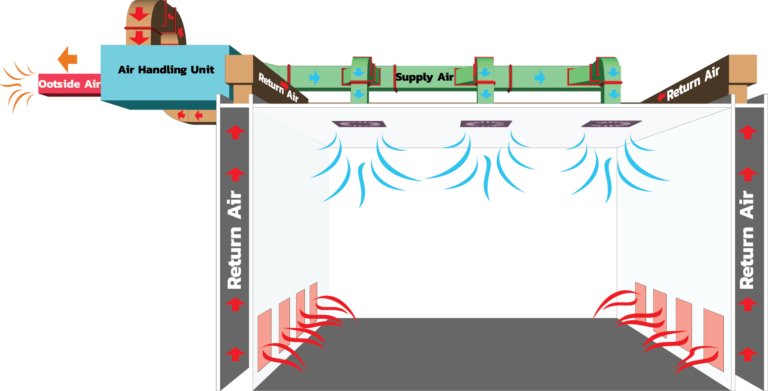Calculating Cooling Load for the Right-sized AC
When is it Necessary to Perform a Cooling Load Calculation?
Most building codes require load calculations for new homes. You should also perform these calculations when purchasing new equipment to ensure proper sizing of heating and air conditioning systems. The HVAC technicians at Blue Valley Heating & Cooling in Longmont are extensively trained in cooling load analysis. They accurately size air conditioners and ductwork, helping clients lower their energy bills.
Martin Holladay, a blogger for Green Building Advisor, explains that “A heat gain calculation requires adding up all the heat that flows into a building – both internal and external, sensible and latent.” Due to thermal mass effects and the dynamic nature of heat gain, the cooling load of the air conditioning equipment will usually be less than the building’s heat gain. A building’s sensible load measures how much cooling is necessary to reduce temperature, while the latent load measures how much cooling is necessary to lower humidity.
Tips for Reducing Cooling Load
- Insulate Deeply: Deep ceiling insulation is critical. While thick wall insulation dramatically reduces heating loads, it does not significantly affect cooling loads.
- Limit West-Facing Windows: Reduce the number of west-facing windows, or cover that side of the building with a porch roof or similar shelter. This strategy prevents solar heat gain and keeps the cooling load in check.
- Minimize Air Leakage: Reducing air leakage lowers both sensible and latent loads, creating a tight building envelope.
- Experiment with Low Ventilation: Lowering ventilation can also help reduce your cooling bill.
- Use Energy-Efficient Appliances and Lighting: These options produce less waste heat, which in turn reduces the internal load on your cooling system.
- Invest in Window Coverings: Use window coverings, especially cellular blinds, to reduce solar heat gain. Keep them closed when the sun shines directly into your windows.
- Evaluate Your Cooling System Size: A good rule of thumb to determine if your cooling system is the correct size is to observe its operation on the hottest afternoons of summer. If it runs constantly, it is likely sized correctly. However, if it cycles on and off, it may be oversized.
To avoid wasting money on high cooling bills, have the expert HVAC technicians at Blue Valley Heating & Cooling conduct a cooling load analysis for your residential or commercial building.
Ready to enhance your comfort and energy efficiency? Contact Blue Valley Heating & Cooling today! Our dedicated team will help you choose and install the best air conditioning system tailored to your needs, ensuring you enjoy optimal comfort while keeping energy costs low.



